Melilla
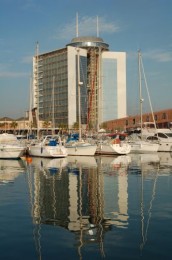
Bearing in mind all the fuss that the Spanish make about the British occupation of Gibraltar it comes as a surprise to many people to learn that they have their own little enclave on the opposite shore, in Morocco. Indeed, Spain has not one but two tiny territories on African soil. The first, Ceuta, is almost the mirror image of Gib, being a similar but much more lowly rock, standing on the far side of the Straits. The second, Melilla, is an altogether different place.
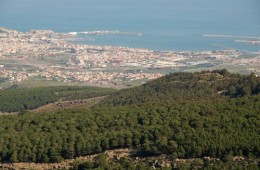
Ceuta is a but a bunny hop away from the motherland. It sits on the horizon, so near that one could almost run a chain ferry across the gap and thereby maintain an umbilical tie. Melilla, on the other hand, lies eighty miles south of the nearest piece of the Spanish mainland, putting it right out of sight and more or less out of mind. The Spanish people who live here are quite certain that they inhabit a part of Spain, but the ones who are of Berber descent know that they are living in Africa. Meanwhile, the average Spanish citizen regards this little corner of the realm as neither one thing nor the other. “Weird” is the adjective most often used to describe Melilla, and when we told our friends that we were going there, this was the only description offered to us: “It’s a weird place.”
The Spanish have had control of Melilla for a very long time; for as long, or nearly as long, as they have had control of Spain. Having spent more than 700 years driving the Muslims out of Iberia they were perhaps unable to draw the line and draw matters to a close. For fourteen generations the fight against Islam had been a way of life for the Spanish aristocracy, so that to lay down their arms would have been to abandon their raison d’être. More to the point, there was no particular reason why the Spanish border should stop at the seashore. Iberia had been ruled, in turn, by the Phoenicians (or Carthaginians), by the Romans, the Vandals, the Visigoths, and latterly by the Arab led Berbers of Morocco. Each of these people in succession had taken over an empire which included all or part of northern Africa – so why break with tradition? Why not press on and liberate the rest of the territory from Muslim rule?

This was presumably the philosophy which inspired Ferdinand and Isabella to carry their reconquista across the water, and just five years after capturing Grenada and gaining control of the last Moorish territory in Iberia they sent out an army of Christians led by one Don Pedro Estopiñan. And ever since this time, in 1497, the Spanish occupation of Melilla has been hotly disputed but never broken.
Throughout the greater part of its 500 year history the colony of Melilla consisted of nothing more than a robust and lofty citadel. It occupies the same rocky outcrop which once was the site of a casbah (or Arab citadel) and there is evidence to suggest that the Phoenicians may once have had a stronghold here too. Compared with the magnificent rock of Gibraltar, this one is a molehill – but, for all that, it was sufficient.
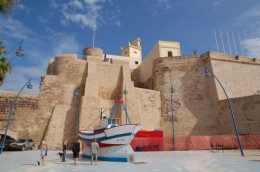
Since the Moorish casbah fell to the Spanish, whilst theirs subsequently proved to be invincible, it is clear that the new fortification was somewhat stronger than its predecessor. Its massive sheer walls are some 100 feet high and they are encircled, through roughly 270 degrees, by the sea. Within the outer walls there are forts and, at the centre of the citadel stands a small group of houses which was occupied by the few civilian residents. When the citadel was under attack, the women and children would take refuge in a series of tunnels which were cut into the rock. These led ultimately to a door in the sea-cut cliffs and to a small pebble beach below. This kind of backdoor, or postern, was common in mediaeval castles and often led to their conquest. Once they had discovered its existence, the bad guys could get in through the escape hatch almost as easily as the defenders could get out. Presumably the tiny seaward entrance to Melilla was very well guarded; anyone arriving from the sea would have been readily spotted by the sentries posted on the castle walls, and perhaps, in any event, the local Rif tribesmen were more at home aboard their camels than in a boat.
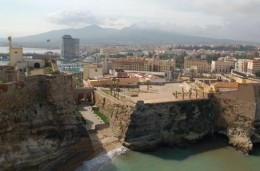
The other great failing of many ancient castles was their inability to withstand a siege – indeed, far more castles were taken by this means than ever fell to an all out assault – but Melilla endured what must have been an almost constant siege. There being no hinterland whatsoever, and no space within the tiny colony for the growing of even a few vegetables, all provisions necessarily arrived from the sea. One can imagine that this regular service might have attracted the attention of the infamous Barbary pirates, who would no doubt have liked to make off with the loot, and the fact that the enclave depended for its life on these imports cannot have been lost on the local Moroccan rulers. No doubt the battery of cannons mounted on the northern wall of the citadel was easily able to clear the immediate vicinity of would-be trouble-makers, but first the supply ships had to reach this place of safety. Evidently they must have been very well armed, or else they arrived with an escort of Spanish warships.
Seemingly, there were times when the colonists endured very lean times; times of near starvation, when the south wind blew for weeks at a time and kept the supply ships from sailing, or when winter gales made anchoring here, and off-loading cargoes impossible. There were certainly times of hunger, but although this is an arid region, with a very low rainfall, there were never times when the colony wanted for water. The Arabs themselves saw to that.
Water was never an issue in Melilla because it issues from the rock. The Spanish military built a number of cisterns to capture the bounty of several springs – but the oldest cistern is one which was built in the pre-Christian era, when the Arab Berbers ruled the roost.
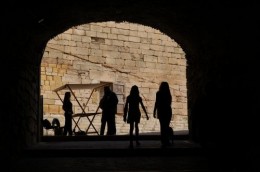
The vast majority of the residents of this tiny lump of rock were soldiers, and a great many of the others were camp followers – the soldier wives and their children. Whether they enjoyed their time here, we do not know, but I have my doubts. From the point of view of a visiting tourist, the old citadel of Melilla is quaint, but to be posted here must have been rather like being sent to live on Alcatraz. Indeed, I can think of a couple of prison islands, encircled by sandy beaches and topped with tree-covered hills, which would have provided a much more attractive residence.
And for 400 years this was all that there was to Melilla – just this isolated stack, as alone and aloof as the skelligs favoured by the early Celtic monks. It seems to occupy no strategic position, and so one wonders why the Spanish monarchy continued to maintain it.
Seemingly, the Spanish rulers had never relinquished the idea of claiming a rather bigger slice of the old territory – and in the early 1800’s they suddenly burst out, and extended their power to cover the entire western half of Morocco. The discovery of huge reserves of metal ores in the vicinity of Melilla transformed the erstwhile fortress, overnight, into a bustling port seething with entrepreneurs – and, of course, those entrepreneurs needed somewhere to live.
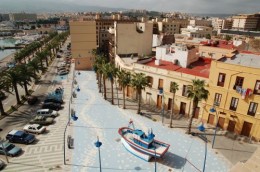
As it happens, Spain very soon lost control of her Moroccan territory, but she continued to make money shipping the ores through a new port, built in the shadow of the citadel, and a treaty was agreed, whereby she also kept control of all the land within a cannon shot of the fortress. So it was that the modern town of Melilla came into being.
But modern is actually not quite the word.
The tourist brochures describe the place as a “jewel of Modernism” – but that is not quite correct either. For a start, there are no Modernist buildings in Melilla. The word sought by the authors and translators of the brochures is Modernisme. Modernisme was a Spanish movement whose adherents claimed to reject Classical art, architecture, and writing, and to take their inspiration from nature. As such, it has more to do with Art Nouveau than with the austere and cruelly ugly buildings spewed up by true Modernism.
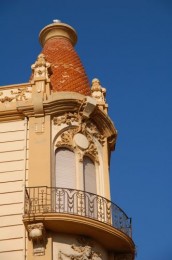
The finest exponent of Modernisme was Gaudi. His buildings are almost organic, their remaining traces of Classical architecture being purely matters of function and symmetry. But Gaudi did not come to Melilla, and the architects who did come used the values of Modernisme in a purely decorative way. Since they were responsible for designing almost the entire new town of the 1920s, the “golden triangle” at the heart of Melilla overflows with buildings elaborately ornamented with lavish helpings of sugary plasterwork. Flowers and garlands sprout from the window lintels and trickle down the facings. Balconies are fenced with wrought iron lilies entwined about one another. Some of this frippery is quite remarkable; some of it is reminiscent of a wedding cake or of Hansel and Gretel’s gingerbread house. As Xoë said, “It looks good enough to eat.”
Then again, much of the work is fifth rate and rather tawdry. And if this is a jewel, as the brochures claim, it could do with polishing. Many of the buildings are in a very poor state.
Melilla is often referred to as the Gateway to Africa, but it is not so much a frontier as a no-man’s-land. The high street, with its fancy buildings filled with jewellery shops and fashion boutiques, is undeniably Spanish, and a hundred years ago it must have presented a stunning contrast to the squalid houses in the nearby African villages. Times have changed, however. Glorious Melilla has gone to seed, and Africa has meanwhile climbed up the ladder; the houses in the adjacent villages are now virtually indistinguishable from those in the modern suburbs of the Spanish town. In as much as there is a huge gulf between the meagre earnings of the Moroccans and the plentiful wealth of the people of Melilla, the two worlds are still very far apart – but physically they are drawing together; and they are doing it inside the little enclave.
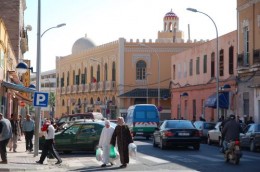
The glorious Modernista buildings overflow with gaudy watches and sparkling earrings; skimpy cardigans and lacy knickers; thigh high boots with heels like six inch nails. But after a couple of hundred yards the high street suddenly ends, and the splendour and glamour of Spain slams headlong into Muslim Africa. At the top of the high street stand the public market and the mosque, and here the pompous faded grandeur of Modernista Melilla collapses entirely. Beyond the mosque lies a very different town, filled with decrepit, semi-derelict houses and occupied by the Berbers.
Scarcely one hundred yards from the jewellery shops with their Rolex watches, and the boutiques with their Gucci bags, people squat at the side of the street beside a small pile of bread or bananas, or a bucketful of fish or snails. Beggars sit with their feet in the gutter and their hands out-stretched.
Few in number, these broken-down people are the most filthy and the most needy that I have ever seen – they are iller, by far, than the beggars one meets in Brazil or West Africa – and this despite the fact that they are living on the fringe of the Western world, in a town where free health care is available to all.
One skinny old man, coughing blood, has a withered stump where he ought to have a leg. Another sits on the kerb with a putrid lump of rotting meat in front of him. The flesh is blue-black in colour and bloated. An open sore the size of my palm oozes blood and puss. Why is he still alive, I ask myself, as I reel past? How can a person still be sitting at the side of the road, begging, when he has gangrene? What will my fifty cents do for him? And – above all – why isn’t he in the hospital?
Roxanne doesn’t understand. She doesn’t realise that this revolting piece of rotten meat is the man’s own leg.
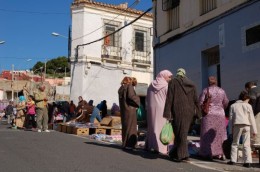
Gateway to Africa? On the contrary; Melilla is the African’s Gateway to Europe. No doubt the man with the leg came here – in better health, I suppose – seeking after a better standard of living. Until fifteen years ago anyone who wanted to could wander into the town; there was no fence to keep them out.
Almost fifty percent of the population of Melilla is now of Moroccan origin, and the majority of these people continue to worship Allah. Most also continue to use Berber as their first language. The town prides itself on being a melting pot of cultures, and it is true that there seems to be no strife; nominally Christian and devotedly Muslim, the two races ignore each other and get along in harmony. Spain seems well disposed towards Moroccan immigrants – and after all, her culture, her language, and even her people are partly descended from the same stock – but unfortunately the Moroccan Berbers are not the only people who want to come inside and get warm. War-torn, drought-stricken, disease-ridden sub-Saharan Africa also has its eyes on the golden pavements of Melilla and on the crock of gold at the other end of the rainbow, in Europe.
The official gateway between Melilla and Morocco is as a weird as everything else in this enclave. It is a busy place. Friends told us that 30,000 Moroccans pass in and out of the town every day, travelling between their well paid jobs in the town and their family homes in the countryside. At the weekend the numbers are swelled by Spanish nationals with holiday homes in scenic Moroccan coves and in the mountains. One can easily spend an hour waiting to cross the border in either direction. The Moroccans have no reason to want to keep anybody out, but like all third world nations they just love bureaucracy. (You can tell when a nation has come of age: it stops trying to make life difficult for tourists.) As for the Spanish – they have to peer into every boot, in the unceasing search for illegal immigrants.
The area in the vicinity of the Spanish checkpoint is rather run-down and insalubrious – or at least, it seems so until one has left it behind. Between the two border controls is a short stretch of mud and mire where pedestrians must hop across puddles and weave their way amongst piles of muck and rotting rubbish. On the far side stands the squalid little building which houses the immigration officer, and beyond his domain is a humourless Moroccan policeman dressed immaculately in a crisply pressed and spotlessly clean uniform dripping with gold braid. Lying at his feet, in the mud and filth, is a dirty chain fitted with dirty great teeth; a primitive version of the “cat’s claw” tyre shredders to be seen, nowadays, in the cross-channel ferry terminals.
There is no way that this man, with his white gloves, is ever going to stoop down and touch that filthy chain. He looks with ill-concealed contempt at our jeans and scruffy jumpers, and handles our passports as if they carried the plague.
Beyond this border point lies more mud, more puddles, more beggars, and more garbage – with goats browsing through it in search of anything that will fit into their mouths. And beyond all this lie the pristine, tree covered mountains of Morocco, with their wild boar and Barbary apes…
This is the only border crossing which is available to the tourist, and the rest of the frontier is now protected by a mighty “fence”; a barrier which actually consists of four separate fences, each of them six metres high, and one of them topped by razor wire. Its construction is said to have cost Spain more than 30 million Euros.
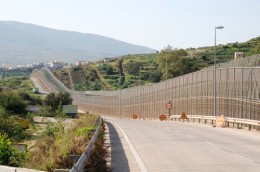
So far as I am aware, nobody has yet managed to climb the fence – but during our stay eighty people came under it.
Melilla is divided in two by the Rio Oro, and although this river is ordinarily dry, or very nearly so, at times it can flow like the mighty Amazon. On the occasion of our visit, Morocco received a sudden downpour of biblical proportions. For two days it rained as if to flood the whole earth, and although we were safe and dry in our ark, the town of Melilla disappeared under the waters. The river burst its banks; but that was not all. When it rains on the other side of the fence, Melilla does not just get wet; it also receives the Moroccans’ rubbish (the riverbed being that people’s favourite refuse bin). The weight of rubbish borne on the flood waters of the Rio Oro leant on the fence, the police opened the sluices, to allow the passage of the tons of rubbish – and fifty black Africans came diving through the gap. A fortnight later the same thing happened, and thirty more men dived into the river and risked their lives in the icy flood waters. All were captured – and saved – but several ended up in the hospital.
Why do they come? Quite clearly, a black man is highly visible in this city of paler skins; quite obviously he will soon be identified and arrested. And even if he manages to stay away from the Guardia, who patrol the waterside as if it were the perimeter of a maximum security prison, how will an immigrant get by; how will he eat, and where will he sleep?
We know the answer to this one, because outside the boatyard where we slipped Mollymawk – just on the other side of the chain-link fence – two Moroccans were living and sleeping on the seawall. One had found himself a cardboard box, and he slept inside that. (We called him Jack – of course.) While we shivered in our bunks, in a boat without a heater, he lay there with the rain drumming down on his cardboard roof and turning it to pulp.
So why do they do it?
We never did discover why Jack and his mate were living rough, but we did learn that the police were not remotely interested in these two fellows. Their only concern was to keep the sub-Saharan Africans out, and the reason for this is very simple. Despite the fuss which they make at their border, the Moroccans don’t really mind the black Africans hanging out in their land illegally – but they won’t ever take them back again. When the men have managed to get into Melilla they cannot be sent back into Morocco; they become a Spanish problem. And since most of them come from countries beset by civil war, returning these men to their own homeland is not an option either; as soon as they set foot in Spain they cry, “Political asylum!”
Outside each supermarket in Melilla stand two or three Somalians and Sudanese, waiting for the privilege of pushing your shopping to your car and returning the empty trolley to claim the 50 cent deposit lodged in the handle. These are the ones who have made the grade. They are bona fide refugees – and now they are saving up to cross the divide and enter Europe.
The politics of the situation go way above my head, but the logic seems inescapable: surely it is time that Europe did something more than simply trying to hold shut the floodgate in Melilla? Perhaps those 30 million Euros might have been better spent on trying to deal with the root of the problem, and thereby helping the people to live happily in their own homelands.
“A weird place,” our Spanish friends told us – and they were right. For five hundred years Melilla has been a weird place – and long may it remain; an incongruous eccentricity; an historic monument; a crumb of European culture balanced precariously on the rim of Africa.
We have also created some brief cruising notes, for the use of other yotties.

Hi Jill,
What a brilliant article you have written. I have never visited Melilla and through all the amazing observations you have made I don’t know if I even want to. I guess that I really do want to visit, I even thought for a while about moving to the mountains close to there. After all, the hills here in Grazalema are just a part of the huge range that starts in Cazorla and finishes at the Rif.
On the financial side as a cure for human migratory issues I don’t think thirty million Euros is enough for a fix. The whole thing needs a rethink and the human race needs to change it’s direction. Then, it wouldn’t need any money because the problem would not exist….
Stay safe
Clive
Superb article, I am looking forward to see Melilla in a few weeks..
Having just returned from melilla have to say well done Jill,
that article hit the nail on the head, and if you get a chance
to experience the” weirdness”you really should not pass it up,
cheeers
Richard.